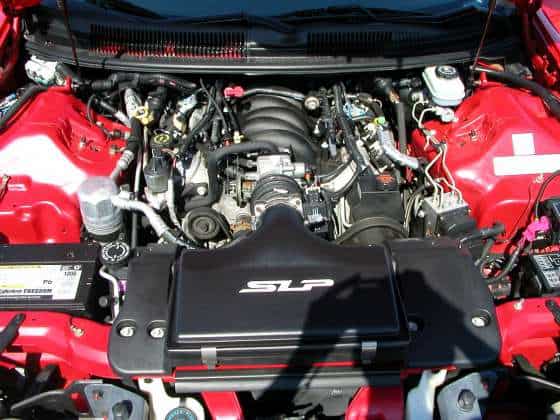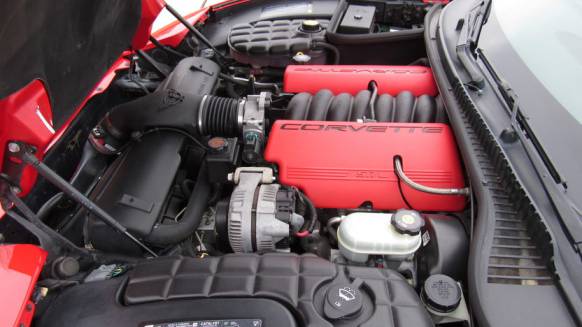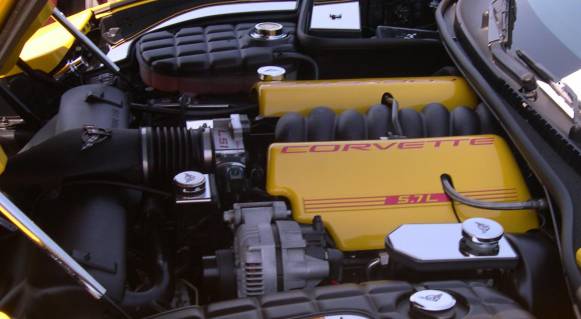If you’re in the market for an engine, we don’t blame you for wanting to check out all of your options thoroughly. In fact, this is highly recommended since engines are a significant investment and can make or break your vehicle’s performance. If you’re conflicted between both the LS1 and LS6 engines, this definitive guide will help you in differentiating between the features and capabilities that they both offer your vehicle so that you can make an informed decision.
All V8 engines are known for being incredibly powerful and high-performing. The LS engines are manufactured by General Motors and are small block-type engines. These worthy contenders by General Motors are often the engine of choice for anyone with a vehicle that supports V8 engines.
What’s the difference between LS1 and LS6 engines?
The LS6 is an upgraded version of the LS1 with much higher performance, reliability, and airflow. You’ll find new features in the LS6 such as a mass airflow sensor, and better horsepower and torque.
Table of Contents
LS1 And LS6 Engine: What’s the Difference
The LS1 and LS6 engines are both part of GM’s LS engine series. The LS1 is a 5.7-liter V8 engine that was used in various GM vehicles, including the Chevrolet Camaro and Pontiac Firebird. The LS6 is a 5.7-liter V8 engine that was used in the C5 Corvette Z06. Both engines are known for their high performance and reliability.
If it’s the power that you’re looking for, the main difference is that the LS6 can provide much more horsepower and torque than the LS1.
What is the LS1 Engine?
Let’s look at everything that the LS1 engine is capable of and can offer your vehicle. The LS1 was released as the third generation of GM engines. It was one of the first engines to be made in an aluminum body as opposed to the full-iron exterior that the predecessor engines had. Not only was this attractive compared to the earlier models, but also significantly lighter, reducing the overall unsprung weight.

But the exterior materials used are not the only thing that sets the LS1 engine apart. It was also one of the first engines to have an electrical ignition system, which was completely different from the design made by traditional distributors. The LS1 has a coil-on-plug design, which means that the ignition coils and spark plugs operate for the vehicle to start and the engine to work.
In terms of power capabilities, the LS1 Engine could offer around 345 Horsepower along with 350 pounds of torque per foot. However, the LS1 engine can be further optimized for even more powerful capabilities.
What is the LS6 engine?
You can think of the LS6 as an upgraded version of the LS1. This engine can provide lots of features that the LS1 cannot, while also doing the same operations better.

The LS6 has 400 pounds of torque per foot and 400 horsepower which is significantly more than the LS1 capabilities.
The LS6 is heavier, however. It is mostly made out of aluminum but also has some forged cast iron parts. Similar to the LS1, there is a wet-sump oil system in the LS6 as well. This oil system is found in the rear portion of the small block engine, while you can find the air pump located in the front portion.
There are also some major structural changes in the LS6, namely the intake set-up being present in between the cylinder heads.
Advantages of the LS1 Engine
You’ll find that even though the LS1 is an older model, there are still things that this engine does that the LS6 cannot compete on. One such aspect is the exhaust gas recirculation provision which is vital for the air circulation of the vehicle. Having this recirculation provision works in tandem with the exhaust system to ensure that there aren’t any clogged gases or pollutants that are slowing the vehicle down.

The recirculation provision isn’t present in the LS6 engine, and you might have to consider how the exhaust system is affected without this chamber working in recirculation.
Advantages of the LS6 Engine
There are many things that the LS6 does that is far ahead of the LS1. Horsepower and torque are one of the major differences between the two engines, with LS6 having much more on its predecessor.
The LS6 engine also has much more main web strength than previous models, as well as the introductory MAF sensor. This mass airflow system is part of the engine and will calculate the real amount of airflow inside of the fuel injectors and engine. This sensor is crucial for monitoring the air-to-fuel ratio and being able to stay on top of any part replacements as well as understanding your vehicle’s fuel consumption and economy at all times.
The design of the LS6 is different from the LS1, featuring a flat bottom instead of a bump. The intake manifold present inside the LS6 itself is much better, meaning that your engine benefits from smoother and less complicated airflow. This could actually make up for the lack of exhaust gas recirculation provision in the LS6.
How to choose between the LS1 and LS6
For most people, the choice between the LS1 and LS6 seems to be an easy one: you would assume that the more powerful engine the LS6 is the better option. However, this isn’t necessarily the case, and the LS1 might actually be a better fit for your vehicle according to your unique requirements.
We’ve listed out a couple of factors that generally govern the decision-making process between LS1 and LS6 engines:
LS1 vs LS6 Reliability
Everyone wants a reliable engine. This isn’t a replacement that anyone can afford to (or want to) make every year, which is why it’s paramount to invest in a reliable engine that will last years together.
The LS6 is undoubtedly a much more reliable version of the LS1 since it addresses many of the issues that would crop up with the LS1. In particular, having the windows cast between the cylinder block is an important feature that boosts reliability.
LS1 vs LS6 Performance:
When we’re talking about engines, everyone is always looking at performance. Performance is the sole reason why people decide to upgrade or rebuild their engines in the first place. In this aspect, the LS6 can deliver better performance without a doubt. It has the same displacement as the LS1 but can deliver much more horsepower and torque.
LS1 vs LS6 Price:
Since it’s a much older engine, the LS1 is undoubtedly cheaper than the LS6. You can expect to find the LS6 for around $6000+ while the LS1 can be around $4000-4500. While the LS1 is cheaper than the LS6, you have to consider if the features make it worth it. Spending more might provide much more value to your vehicle as well as better performance and reliability. All in all, this is a call you will have to make after considering the features that both the engines can offer.
Frequently Asked Questions
Is LS1 and LS6 the same engine?
The LS1 and LS6 aren’t the same engines, although they share some similarities. The LS6 is an improved version of the LS1, with enhancements like a higher-flow intake manifold, stronger block, and higher compression ratio.
Is the LS6 an LS1?
The LS6 isn’t an LS1, but it’s based on the LS1 design. The LS6 has various upgrades and improvements, making it a more powerful and efficient engine
How can you tell LS1 from LS6?
To differentiate between an LS1 and LS6, inspect the intake manifold. While Corvette LS1 intakes lack the EGR provision and appear identical to LS6 intakes, you can identify the LS6 by flipping it over and checking for a flat bottom. This characteristic confirms it’s an LS6 intake.
Conclusion
You can easily conclude that the LS6 is a much stronger and high-performance engine than its predecessor, the LS1. However, the LS1 is still a very solid and reliable option for someone looking for an engine under a certain price point. There’s no denying that the LS1 is cheaper and worth the cost for all the specifications that it can provide your vehicle. Understanding which engine to purchase is a decision we’ve left to you: but we trust that this article has provided you with all the information necessary!
